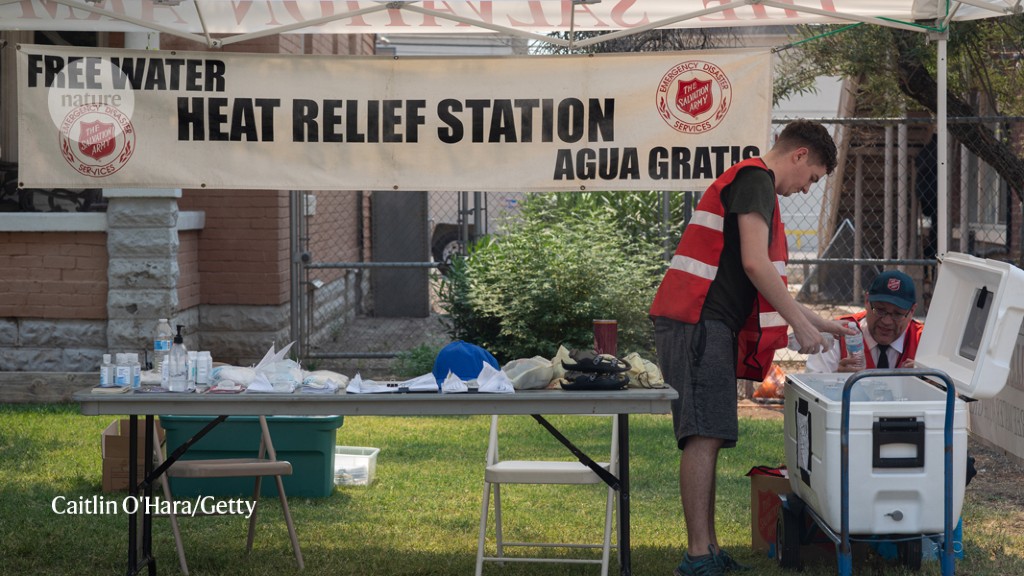

In places like Arizona, heat-relief stations are set up to help keep people hydrated during periods of extreme heat. Credit: Caitlin O’Hara/Getty
Climate sciences
It isn’t just getting hotter in the US Southwest — the region’s climate is also getting drier.
As global temperatures rise, the atmosphere should, theoretically, get damper because warmer air can hold more water. But that prediction might not hold true in all locations, particularly arid regions.
Karen McKinnon at the University of California, Los Angeles, and her colleagues studied temperature and humidity measurements gathered in summer in the Southwest between 1950 and 2019. During this period, atmospheric humidity declined, with the biggest drops seen on hot days.
The drier conditions are due to a drop in the amount of moisture in the soil — which can evaporate into the air — and the chances of days being both dry and hot increasing over time. That raises the risk of wildfires and of much-needed water evaporating from reservoirs.
Regional officials should prepare for these impacts of lower humidity, the scientists say.
June 21, 2021 at 10:47PM
https://www.nature.com/articles/d41586-021-01660-1
Climate warming leaves the US Southwest high and dry - Nature.com
https://news.google.com/search?q=dry&hl=en-US&gl=US&ceid=US:en

No comments:
Post a Comment